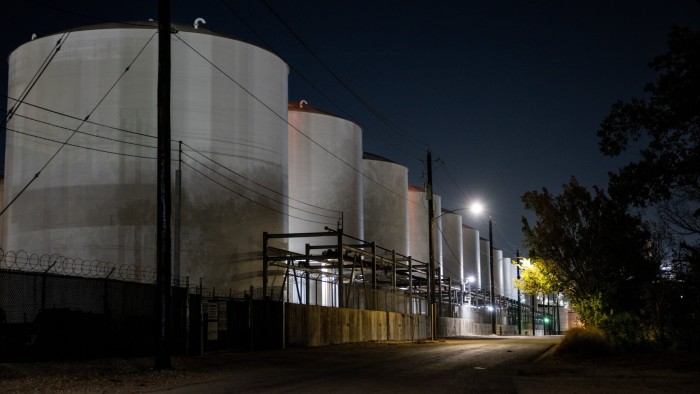Stay informed with free updates
Simply sign up to the Oil & Gas industry myFT Digest — delivered directly to your inbox.
The world’s largest oil companies are braced for their toughest year since the pandemic, as falling crude prices squeeze profits and shake investor confidence ahead of the quarterly earnings season.
This year is set to mark Big Oil’s third consecutive 12-month period of falling profits, which have dropped sharply from the highs of 2022 that followed Russia’s full invasion of Ukraine. The adjusted net income of five of the biggest western oil companies — ExxonMobil, Shell, TotalEnergies, Chevron and BP — fell by about $90bn from 2022 to 2024.
The pressure on the industry has intensified in recent weeks as increased supply from Opec and escalating trade tensions under President Donald Trump have undermined investor sentiment. Brent crude briefly slipped below $60 a barrel this month, with some analysts predicting that prices in the second half of 2025 will be more than a fifth down on last year’s average of $81.
Shareholders are questioning which of the big companies have the cost discipline and balance sheet strength to maintain the higher dividends and share buy-backs on offer over recent years, said analysts.
“The questions we’ve been getting from investors are around who’s going to cut first,” said Biraj Borkhataria, an analyst at RBC Capital Markets. “Given how uncertain the environment is, investors are looking for some reassurance.”
First-quarter results from Italian major Eni, released last Thursday, offered a glimpse at how companies are responding. Eni promised to trim its spending by at least $500mn this year, and that its cash flow would be $2bn — or 15 per cent — lower than expected at an oil price of $65 a barrel.
But the company pledged to keep its shareholder distributions intact. HSBC analysts said the strategy was a “template to follow” for Eni’s peers, but that not all had a balance sheet strong enough to pull it off.
Across the industry, companies are scaling back their investments in response to the oil price slump. “We now expect global upstream development spend to fall year on year for the first time since 2020,” Fraser McKay, at energy consultancy Wood Mackenzie, said in a recent report.
BP is due to report results on Tuesday, followed by Total on Wednesday and then Shell, ExxonMobil and Chevron on Friday.
Most analysts expect a weak quarter from the companies. But the sharpest fall in oil prices came after the end of the reporting period, so investors will be most interested in what guidance the companies offer.
Among the European majors, Shell appears better prepared for the downturn. Chief executive Wael Sawan promised in March to return half of Shell’s cash flow to investors. He also said the company could continue to buy back its shares if the oil price fell to $50 a barrel and would maintain its dividend even at $40 a barrel.
The most vulnerable oil major is likely to be BP, under pressure from activist Elliott Management and whose promise to return 30 to 40 per cent of cash flow to shareholders was based on an oil price of $71.50 a barrel this year. Each dollar the oil price falls below that level will hit profits by roughly $340mn, the company said in February.
In the US, ExxonMobil and Chevron are faring differently, according to Jason Gabelman, analyst at TD Cowen. While Exxon’s strong asset base means it can preserve shareholder distributions well into 2026, he expected Chevron to reframe expectations.
“Chevron previously presented a $10bn to $20bn buyback range from $60 to $85 oil. Oil moving to the low end could mean buybacks are reset lower moving forward,” he said in a note.
Beyond the majors, smaller shale producers and oilfield service companies are also warning of tighter conditions if prices remain low. Last week, the three biggest western oil services companies, Baker Hughes, Halliburton and SLB, all raised concerns about the weakening outlook.
https://www.ft.com/content/692ba45e-6dd9-425c-b03d-a41175c0f343


